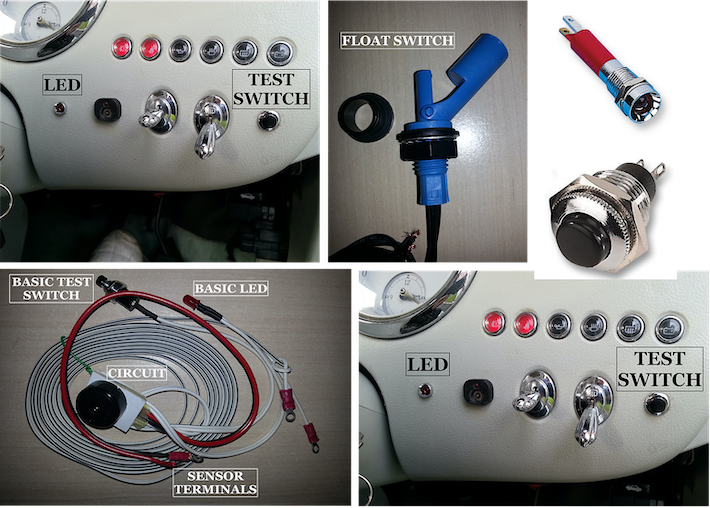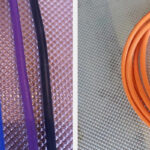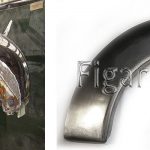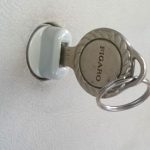Alarm – How to fit a Low Coolant Alarm
Words and Pictures: Simon Smith
A common issue with the Figaro’s is Head Gasket and Piston damage caused by the failure of hoses, thereby causing a loss of coolant and overheating. Figaros only have a temperature gauge meaning you have to keep an eye on the gauge to make sure the car is not overheating. There is no warning light, so if you miss it go up and then drop down once the sensor is no longer surrounded by water the car will overheat. As a club, we always recommend inspecting the hoses or better still replacing them.
I looked around at a number of sensor options, including engine temperature and coolant level. These can be very expensive but can come with useful features.
Having read through some “other” car forums See here I found a cheap simple pre-made kit which warns by LED and buzzer if the sensors are no longer together in the water. So I decided to buy this basic kit.
The kit comes with two sensor wires with terminals which just attach to screws you drill into the expansion tank, however, I thought this a bit crude and could cause electrolysis and cause issues with the terminals over time, I therefore instead attached the two wires to a float switch (rated at 110 ̊ C) which I installed in the expansion tank at the halfway line between MIN and MAX and added some sealant around it before tightening up the nut.
I ran the wires from these around the engine bay and through an existing rubber grommet, which I made a hole in and added some sealant around the cable, into behind the driver-side dash and connected these sensor wires to the kit’s wires. For the kit’s power connections, I took a feed where the Fog light had been taken from and added a mini inline fuse holder for this kit and the fog light and took ground off the body metal.
I didn’t like the look of the switch so I replaced it with a nicer switch (single pole normally closed). I also replaced the 12v LED with a nicer-looking one. So I removed the kit’s LED and switch and soldered the replacement ones and drilled two holes in the dash and fitted them. The circuit board with the LED has double-sided tape on the reverse so I stuck this behind the dash (still within earshot!)
Having installed it I then tested that the float sensor (with float dropped down) set off the alarm and then re-filled the tank just above the midway where it stopped. I then used a long screwdriver and press the float back down to make sure it was moving freely and set off the alarm.
The next check was to press the test button and make sure it also set off the buzzer and LED.
The final test was to take it for a spin to make sure there were no false alarms and also use the test button to make sure that you could hear it OK. All good!!
I’m hoping it will never go off as that will mean fixing something! but I feel better having done it. I was a bit concerned that a sudden fluid loss would not pull the water from the expansion bottle, but having asked the thoughts are that it would.

PARTS AND TOOLS USED
Ebay
– Low Coolant Level Alarm 12V Ebay Item 174369837235 Seller www.ebay.co.uk/str/pwelectronicss
From CPC cpc.farnell.com
– SW03316 – SWITCH, BLACK PUSH BUTTON, SPDT
– SC06539 – LED INDICATOR, 12V HE-RED
– SW03584 – FLOAT SWITCH, LS303-51N – HORIZ (DataSheet: www.farnell.com/datasheets/81416.pdf)
Other bits:
- Mini Inline Fuse Holder
- Mini Fuse
- 12V twin cable
- Heat shrink cable
- Crimp Terminals
- Insulation Tape
- Sealant
- Cable ties
Tools Need:
- Drill and bits
- Round file
- Adjustable spanner
- Wire cutters
- Pliers
- Crimping tool
- Soldering Iron + flux and solder
- Lighter for shrink tubing
The article is published on our club’s forum. you will need to be a member of our club to log in Read more
Please note Simon is providing the info “as is” and in good faith and therefore makes no recommendations, so you should make your own mind up.
As with anything you should only carry out work with the correct tools, instructions and skills. He or the club is therefore not responsible for anything occurring from this information\advice!

 Subscribe to our Figaro YouTube Channel
Subscribe to our Figaro YouTube Channel














